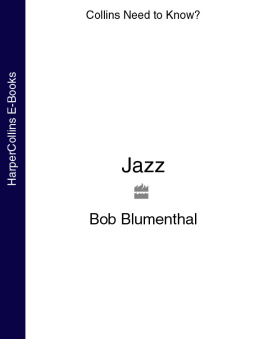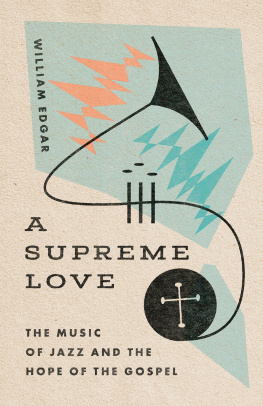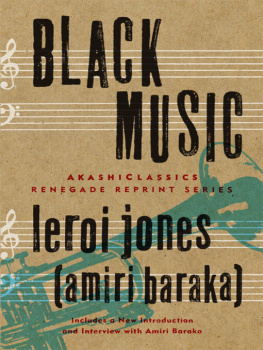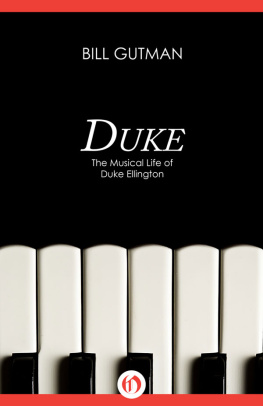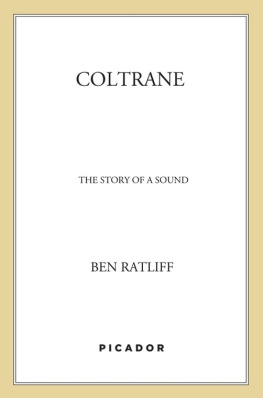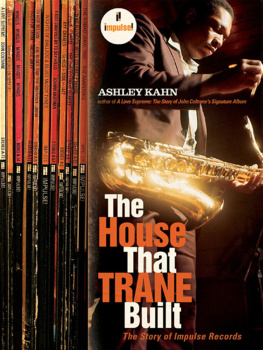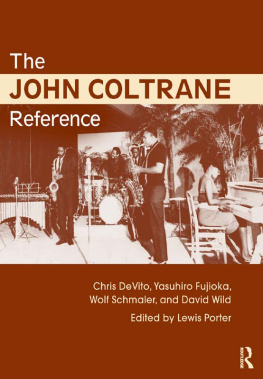PRAISE FOR RALPH J. GLEASONS
Conversations in Jazz
With an undying respect and ever-expanding curiosity, Ralph J. Gleason heard music as a means of entering into a world of creativity, connection, and human understandinglong before others recognized it. His conversations with music makers whom we now worship with unquestioning reverence are required reading. They show the information and deference one needs to bring to any cultural discussion, and the treasures of insight and information one can hope to leave with. ASHLEY KAHN
Ive been digging Ralph Gleasons dialogues in jazz since before I was born! My father and Ralph were still teenagers when John Hammond brought the first Lester Young recordings to them in a dorm room. So the discussions began. I heard some later ones on their original broadcasts, but the interviews in this book come from a private stashat homesomewhat as it started eighty years ago. PHIL SCHAAP
Ralph Gleason brought jazz into countless American living rooms during the 1960s through his TV series, Jazz Casual. Yet the one-on-one discussions in his own Berkeley living roomtape recorder rolling, Gleason and one or another of jazzs greats sitting in overstuffed leather chairstell deeper stories: John Coltrane on the cusp of a breakthrough; Sonny Rollins entering a period of reclusion; Philly Joe Jones sharing drumming tradecraft and history; Duke Ellington explaining why, in music as in life, problems are opportunities. LARRY BLUMENFELD
What a great opportunity to eavesdrop on these conversations with some of my musical heroes. Trane, Duke, Sonny. Are you kidding? STEVE ELSON
Conversations in Jazz
Conversations in Jazz

The Ralph J. Gleason Interviews

EDITED BY
TOBY GLEASON
Foreword and Introductory Notes by Ted Gioia

Published with assistance from the Louis Stern Memorial Fund.
Copyright 2016 by Toby Gleason.
All rights reserved.
This book may not be reproduced, in whole or in part, including illustrations, in any form (beyond that copying permitted by Sections 107 and 108 of the U.S. Copyright Law and except by reviewers for the public press), without written permission from the publishers.
Yale University Press books may be purchased in quantity for educational, business, or promotional use. For information, please e-mail (U.K. office).
Designed by Sonia Shannon.
Set in Electra type by Integrated Publishing Solutions,
Grand Rapids, Michigan.
Printed in the United States of America.
Library of Congress Control Number: 2015954409
ISBN 978-0-300-21452-9 (paper over board: alk. paper)
A catalogue record for this book is available from the British Library.
This paper meets the requirements of
ANSI/NISO Z39.48-1992
(Permanence of Paper).
10 9 8 7 6 5 4 3 2 1
Contents

by Ted Gioia
Foreword

DID RALPH GLEASON REALLY leave us forty years ago? It certainly doesnt feel that way. Even today, you will find Gleasons name on the masthead of each issue of Rolling Stone, the magazine he helped launch back in 1967. His trademark trench coat hangs in the Rock & Roll Hall of Fame, almost as if Gleason just stopped by a moment ago to check out the scene. The Monterey Jazz Festival, a bright idea Gleason had back in 1958, continues to thrive even as other music events and venues come and go. Every day, a music fan somewhere reads his liner notes to some classic album, whether Miles Daviss Bitches Brew or Frank Sinatras No One Cares or Simon & Garfunkels Parsley, Sage, Rosemary and Thyme.
I know that a car company has already usurped the motto Built to Last to sell pickup trucks, but I insist that Ralph Gleason has a better claim to the phrase. He might have earned a living writing for a daily newspaper, but he disdained the ephemeral and championed the timeless. And Gleasons knack for tapping into the zeitgeist went far beyond the jazz world. Even today, anyone probing the great causes and upheavals of the mid-twentieth centurythe Civil Rights Movement, Vietnam War protests, Summer of Love happenings, beatniks, censorship trials, Altamont, you name itwill eventually encounter his name and legacy. In many instances, Gleason not only reported on the scene, but helped shape it.
Yet Ralph Gleason will always be remembered, first and foremost, as a jazz writer. Jazz was his first love and, like many early attachments, remained the most passionate. And that sense of intimate attachment comes across again and again in these pages. Gleason may be interviewing a jazz legend, John Coltrane or Duke Ellington, but the conversations come across as uninhibited tte--ttes between familiars. I feel like Im on the same level as you, Duke Ellington tells Gleason a few minutes into their dialogue. Quincy Jones, midway in their conversation, asks, Do you want me to be frank?, and proceeds to talk the way jazz musicians usually do only among themselves.
Ralph Gleason discovered jazz back in 1934, when he was a youngster recuperating from the measles. Confined to bed in a dark room, he experienced contact with the outside world via the radio. I lay there, wide awake in the night, he later recalled, picking up those strange sounds in the nightDuke Ellington, Louis Armstrong, Cab Calloway, Earl Hines, Fletcher Henderson.
Gleason was soon writing record reviews for his college newspaper while a student at Columbia University. At this stage in American music history, serious jazz writing hardly existed. But around the time he graduated, Gleason launched his own music periodical, Jazz Information, one of the very first jazz magazines in the United States. The magazines leading rival at the time, the HRS Society Rag, adopted a more playful attitude to jazza lighthearted approach that Gleason and his colleagues scorned. Even at this early stage, he stood out for his thoughtful and incisive criticism and his unflagging belief that the popular music of the day possessed deep historical and cultural significance.
World War II interrupted Gleasons jazz advocacy, but after a stint with the Office of War Information he relocated with his wife, Jean, to the West Coast. During the postwar years, the San Francisco jazz scene was decidedly old-fashioned. The most popular bands played traditional jazz of the Dixieland variety, and anything outr or experimental struggled to find an audience. Gleason catered to the local preferences by producing concerts by New Orleans trombonist Kid Ory, but also looked for ways to expose the public to the hipper new sounds they might otherwise miss.
This would be Gleasons modus operandi for the rest of his life. You can call him a music critic, but he might be better described as an evangelist for cutting-edge artistry and social change. He praised the greatest artists, and usually before most of the public even knew who they were. Readers looked to him for guidance whenever anything new or controversial emergedwhether Elvis Presleys rock n roll or John Coltranes modal music, Bob Dylans protest songs or Lenny Bruces edgy comedy routines. Gleason knew all of these individuals, and was one of the very few cultural critics of his day who was equally at home in conversation with Duke Ellington, Joan Baez, Hunter Thompson, or Miles Davis. (After one early encounter with Davis, he learned that they both used the same type of hypodermic needlealthough Gleason used his only to treat his diabetes. Davis, for his part, had never scored insulin.)


